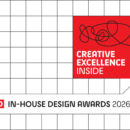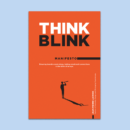
As we expand our Elevating Design Voices series, 2SLGBTQIA+ Members share their work, experiences and insight on building an inclusive and diverse design community. First up, Paul Santos RGD.
Paul has partnered with Conservation Authorities across Ontario, non-profits and government departments on both the Canadian and US sides of the border to raise awareness and educate the public about local and international environmental issues. In 2020, he created the Leaders to be Proud Scholarship Award, a bursary for high school graduates who show strong leadership skills and advocate for inclusivity, diversity and support for the 2SLGBTQ1A+ community within their school or hometown. It is the first award of its kind within the Windsor-Essex region.
While some social progress has been made in regards to the representation and inclusion of the 2SLGBTQIA+ community, we still have a long way to go. What role does design play in creating a more inclusive world?
Design is the match that can ignite big change. As the origin for ideas, it allows for questions to be asked and concepts to be shared, torn apart and re-built stronger. It's common for us to create from the perspective of our own experiences, which can lead to an unintentional blindspot to other angles and viewpoints. Doing research outside your comfort zone and personal bias can help designers gain valuable insights and opportunities to design more inclusive products and services. Being 2SLGBTQIA+ already puts you at an advantage — when you recognize your own differences you more easily notice the lack of representation of other marginalized groups. Design is uniquely positioned to reflect diversity through imagery/graphics and visuals where diverse communities can be represented and included in experiences and products.

What are the steps an organization should take to build an 2SLGBTQIA+ inclusive workplace?
Organizations must recognize that fostering diversity benefits both the company and the consumer's experience. Having diverse voices in the designing and decision-making process challenges the mainstream and leads to creative thinking and improved results. Organizations need to make a concerted effort to hire employees from a variety of backgrounds, experiences, genders and ethnicities. It is important to start with a diverse hiring committee to eliminate bias from the beginning and it is also important to look at non-traditional methods for recruitment e.g. referrals and head hunting, etc.
How can design schools and colleges develop an 2SLGBTQIA+-friendly curriculum?
By educating themselves on the amazing work the 2SLGBTQIA+ community has made throughout history. They need to understand the impact those groundbreaking ideas have had on the designcommunity and why those contributions need to be not only integrated into the curriculum but celebrated. Educators should include a broad range of people when assigning topics for art and history, so that students can see themselves in their schoolwork. This will allow them to have a more authentic understanding of the world around them.
How can design schools and colleges nurture a more positive, inclusive environment for students?
Support students from different walks of life. Encourage them to share their stories and experiences in a safe and open environment. Examine school policies, then if needed re-examine them! Be open and transparent and make sure to respond to hateful behaviour. The worst thing a teacher can do is nothing. Empower educators to feel confident enough to stand up and stop unacceptable behaviour. These actions can send a signal of safety and acceptance and will have a big impact on the student experience.

You founded an awards program for high school graduates advocating for inclusivity, diversity and support for the 2SLGBTQ1A+ community. Can you tell us more about it?
This award came about when I was brainstorming a variety of events and social activities to connect my local 2SLGBTQ1A+ community together. The Windsor-Essex region may be small, but we have made big strides towards inclusion and representation. I still wanted to do more, especially outside the city where marginalized populations and particularly youth are at greater risk of mental health and wellbeing issues. Our local schools and students have really taken inclusion and acceptance to the next level. It’s a space where real change is happening. I wanted to acknowledge the courageous actions that young people are taking and hopefully spark life long change.
A message you’d like to share with the next generation of designers.
Do your research and work hard. Don’t just stop at trends. While it’s tempting and what the client usually wants, I hear you, trends turn old faster than it’ll take you to create them. Educate yourself on the rich history that is design — especially within the 2SLGBTQIA+ community. Our design can have some real pain and strength behind it. And lastly, sometimes the biggest wounds don't come from the outside world but from ourselves. Recognizing and overcoming your own internalized homophobia will help you take back power and support others. I’m here to tell you that your voice is important, your story is unique and your differences are what make you valuable!

















